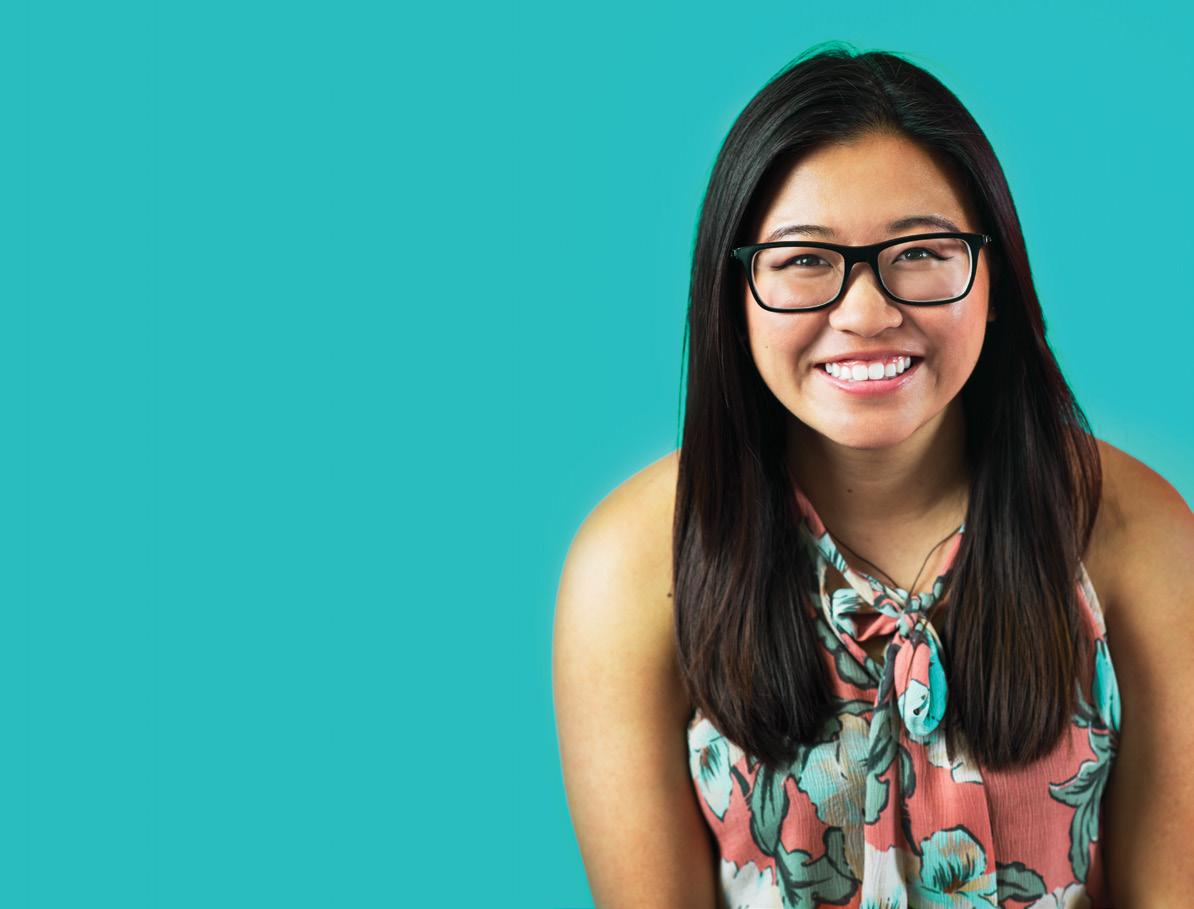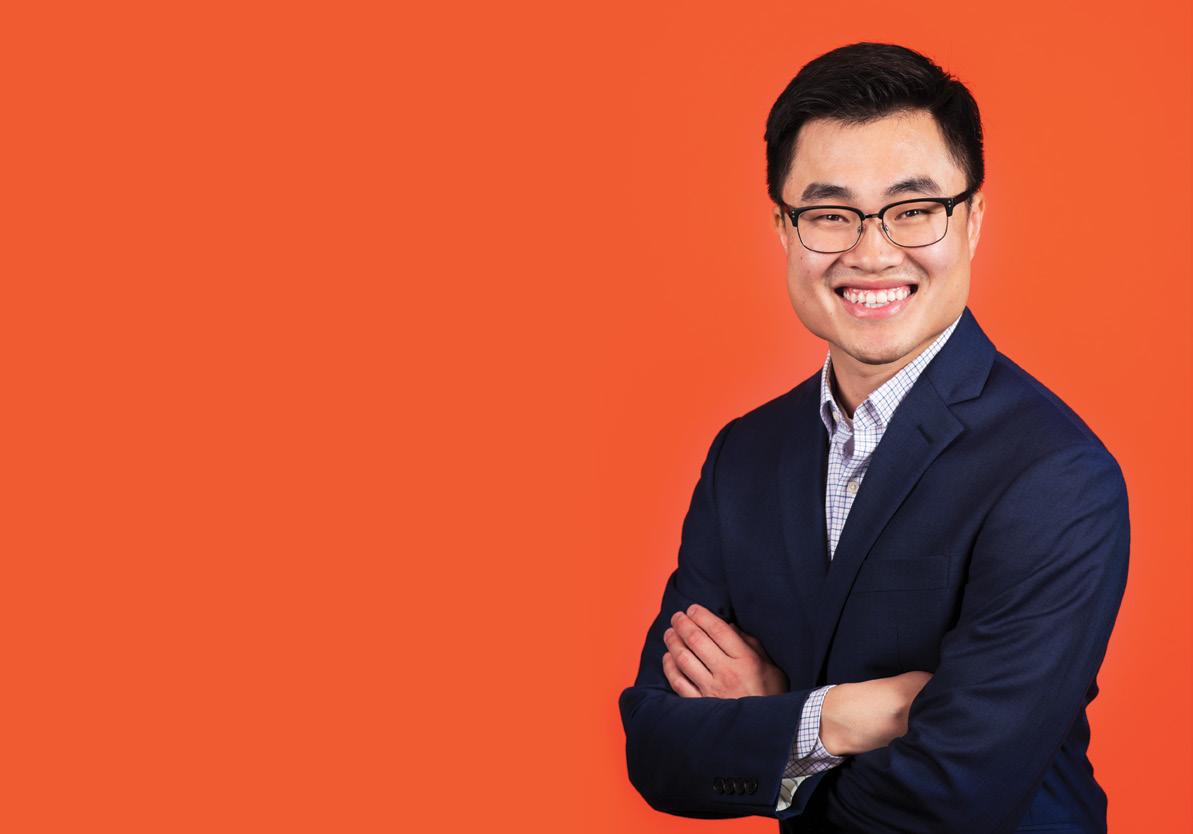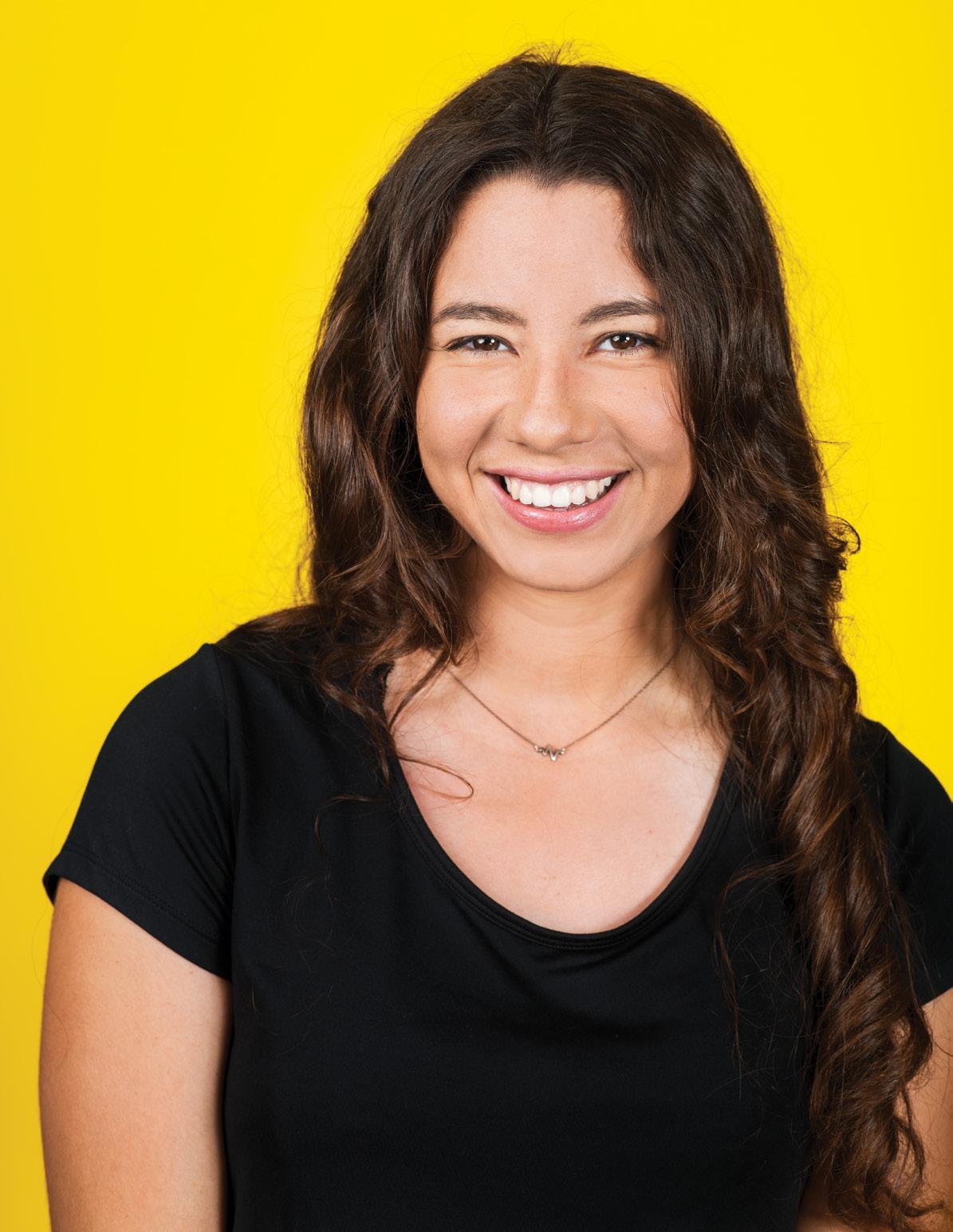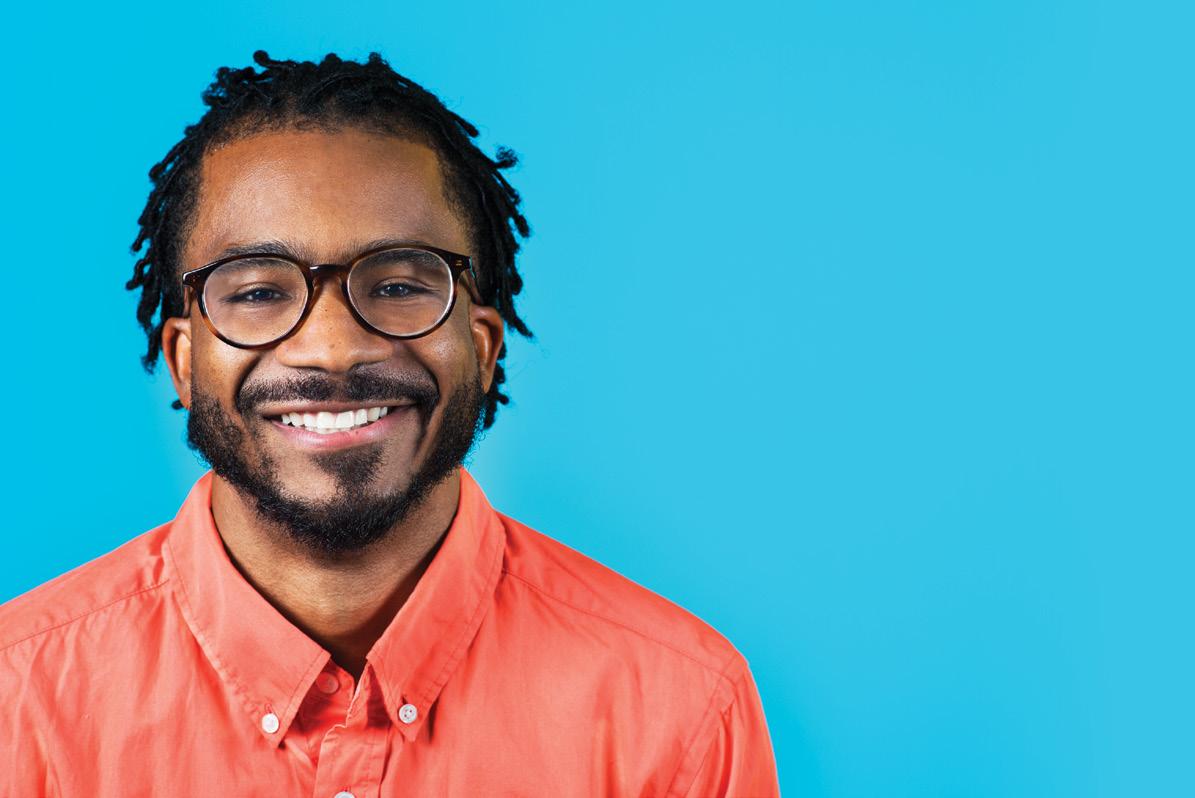
12 minute read
Student-led organization PTMLA aims to promote diversity in physical therapy.
BY MICHELLE MCCARTHY
You could say the physical therapy profession has a bit of a diversity problem. According to the U.S. Bureau of Labor Statistics, a mere 5 percent of all practicing physical therapists are African-American. And only 3 percent of all physical therapy students this year were AfricanAmerican, while 6 percent were Hispanic, according to the Commission on Accreditation in Physical Therapy Education. USC’s physical therapy program scored a little higher, with 10 percent of its students being African-American and 21 percent Latino. While USC fares better than national averages, in response to this inequity, a group of USC physical therapy students created the Physical Therapy Multicultural Leadership Alliance (PTMLA) in 2004. The student-led organization’s goal is to educate the local community about the physical therapy profession and promote diversity within the field, with an emphasis on minority and underserved communities. “I was shocked by how minimal the minority representation was in our class and program as a whole,” says PTMLA Faculty Adviser Terry Richardson II DPT ’14. “Then I started to find out it’s not just here at USC; this is a nationwide conundrum. I felt this burn to do what I could to increase minority representation and, in particular, African-American representation, because we make up only 3 percent of the entire profession nationally, which is not necessarily what our patient population is going to look like.”
For Jessica Nguyen DPT ’19, PTMLA’s current president, joining the organization was a natural progression from the volunteer work she was already doing in her Orange County neighborhood. “The Vietnamese community doesn’t know much about physical therapy, and there’s not a lot of Vietnamese physical therapists out there,” she says. “Coming to USC and seeing there was an organization dedicated to serving minority communities and spreading the word about physical therapy to these communities, I knew I wanted to get involved.” To get the message out, PTMLA members venture into the community at least once a month, speaking at local elementary, middle and high schools, and setting up booths at college fairs, career days and various other events. What they’ve found is many kids in these areas have never even heard of the profession. “The thing about kids from minority backgrounds is that a lot of times they don’t think they can reach higher education,” Nguyen says. “So we go out there from different backgrounds like Asian, Hispanic and African-American, and we tell them, ‘Look, we are from minority backgrounds, and we are pursuing higher education and careers in the health profession, and you can, too.’”
Continued on page 20 »
RUNNING THE NUMBERS
U.S. PHYSICAL THERAPISTS
Despite large-scale demographic shifts in the U.S. population, the physical therapy profession remains largely Caucasian. Below we compare the profession’s racial demographics (in the hexagons) with percentages of the society they should mirror:
ASIAN (6.2%) 78.2 CAUCASIAN (78.4% OF U.S. POP.)
14.7
5 5.3
AFRICAN-AMERICAN (12.1%)
HISPANIC or LATINO (16.9%)
Source: “Labor Force Statistics from the Current Population Survey,” Bureau of Labor Statistics, 2017
U.S. PHYSICAL THERAPY STUDENTS
There isn’t much relief to physical therapy’s lack of diversity in the professional pipeline. There were 34,000 students enrolled in physical therapy education programs last academic year, according to the Commission on Accreditation in Physical Therapy. This is how that group breaks down by race:
ASIAN
8.21
HISPANIC
6.29
75.9 CAUCASIAN
AFRICANAMERICAN 3.26
UNKNOWN 3.07
2.42 OTHER
.43 AMERICAN INDIAN/ ALASKAN NATIVE .32 NATIVE HAWAIIAN/ OTHER PACIFIC
ISLANDER

PROFESSIONAL PIPELINE
GO WEST, YOUNG MAN
Xavier University of Louisiana visiting scholar Keairez Coleman could serve as prototype for a new partnership meant to diversify student body.
BY YASMINE PEZESHKPOUR MCM ’16
In some ways, Keairez Coleman is a pioneer, blazing what could become a well-worn trail between Xavier University of Louisiana and the University of Southern California.
The visiting scholar from XULA, a historically black college in New Orleans, is at the division this summer as part of the McNair Scholars Program, a government initiative meant to increase the number of graduate students from traditionally underrepresented populations. But the visit represents a prototype for a program the division aims to begin to better diversify its student body.
“We’re looking for creative, innovative ways to bring greater diversity to physical therapy,” says PTMLA Faculty Adviser and XULA alumnus Terry Richardson II DPT ’14. “We’re the number one physical therapy program in the country, and Xavier is the number one school for placing African-Americans in health professions schools, so it seemed like a natural partnership.”
Like Coleman, future XULA visiting scholars would audit classes as well as shadow researchers, physical therapists and physical therapy students to better understand physical therapy education.
Promising XULA scholars could then apply for early acceptance at the division. While the details are still being worked out, Richardson hopes to finalize the USC-XULA partnership later this fall.
In the meantime, Coleman, a trackand-field athlete majoring in biology and minoring in chemistry, is excited about the opportunities that lay ahead for him during his 8-week visit to USC.
“I feel that this experience will be a critical point in my career journey,” Coleman says. “I hope to gain as much knowledge as possible and use this experience as inspiration for future endeavors.”

—Jessica Nguyen DPT ’19, PTMLA President
PHOTO BY HANNAH BENET
« Continued from page 18
While recently attending the college and career fair Adelante Mujer Latina Conference in Pasadena, Calif., PTMLA scholarship recipient and upcoming PTMLA President Jessica Goytizolo DPT ’20 was happy to field questions from the young women in attendance. “We got to talk to these girls and really saw a lot of them inspired,” she says. “They were asking, ‘Do I need to have perfect grades?’ ‘Do I have to have a perfect GRE score?’ We told them, ‘No, we as physical therapists need to see you are a people person. You want to help others. You want to be a good influence in the medical community.’ That was one of my favorite experiences so far.”
UNDERSTANDING EACH OTHER
PTMLA has set its target on local communities, but it also focuses on educating from within by hosting a speaker series that is open to anyone on campus. Physical therapists from minority backgrounds are brought in for talks and presentations to help students become more knowledgeable as clinicians. “As an Asian woman, I might not understand different African-American populations or Hispanic populations, but through the speakers and the experiences we have in PTMLA, I’m able to get a better understanding,” Nguyen says. There were approximately 75 members in PTMLA this year, the largest number since the organization’s inception. Richardson says having a group like this at USC is incredibly important, because it provides an opportunity for people to find common ground, to learn about cultures or ethnicities they aren’t familiar with and to debunk stereotypes. “We all have a specific lens through which we see the world,” he says. “Sometimes it’s difficult to step outside of our frame of reference and have a better understanding of what someone else has experienced.”
Continued on page 22 »
PTMLA SCHOLARS
CHRIS FLOYD DPT ’20

PTMLA member (and upcoming Vice President) Chris Floyd aims to be more than a physical therapist. He hopes to be a role model.
“In many L.A. neighborhoods, there is a lack of positive role models for young minority boys and girls,” he says. “I think it’s important for people like me to serve as an example so they see that this can be a possibility for them, too.”
Last fall, Floyd was one of two students to receive the PTMLA scholarship, awarded annually to firstyear minority students who exemplify qualities of leadership, community involvement and academic excellence.
And while the $3,500 was a boon for his tuition bill, the scholarship’s intangible benefits resonated even more.
“Receiving the award reinforced my passion for giving back to the communities around me and gave me more confidence in feeling like I belonged and could be successful in the program,” he says.

—David Tang ’13, DPT ’19, PTMLA Vice President
« Continued from page 20
A PHYSICAL THERAPIST WHO LOOKS LIKE ME
Within the physical therapy profession itself, diversity is key to pushing the field forward. Richardson says bouncing ideas off of colleagues who come from differing backgrounds can lead to breakthroughs that may not have surfaced with someone from a similar ethnicity. “That collaboration allows us to be a better version of ourselves for our next patient interaction.” PTMLA Vice President David Tang ’13, DPT ’19 says the rapidly changing demographics in the United States call for a physical therapy workforce that mirrors its patient population. “We work directly with the people, and there are so many ethnicities and cultures, so it’s important that we can engage with them, even if it means overcoming a language or cultural barrier.” Physical therapists who are able to interact with minorities create an environment in which patients feel comfortable seeking medical assistance, which could lead to better overall health for the community. “When you can deal with someone who looks like you and you believe they can understand where you’re coming from a little more than someone from another ethnicity, then sometimes I think that does contribute to better outcomes in a lot of ways,” Richardson says.
A GROUNDING EXPERIENCE
In addition to focusing on USC’s surrounding communities, PTMLA members take part in annual trips to Mexico and Costa Rica, where they provide
PHOTO BY HANNAH BENET
services to people who don’t have access to physical therapy. The trips serve as an extension of the group’s mission statement to help underserved populations. “It’s such a humbling experience,” Nguyen says. “Sometimes we get bogged down with studying and tests, but coming to these communities where they don’t have insurance, they don’t get to see a physical therapist and they have a lot of limitations — it grounds our members and reminds us this is what we do with our profession. We’re not here just to see 100 patients a day and get paid. These are real people who we can actually affect over time and better their lives.” Even more than an opportunity for the students to practice their physical therapy skills, these trips teach them lessons that can’t be acquired in a classroom. “There isn’t a lot of wealth in those cities, so it gives the students perspective,” Richardson says. “There
Continued on page 24 »
PTMLA SCHOLARS
JESSICA GOYTIZOLO DPT ’20
PTMLA member Jessica Goytizolo can’t stand the idea that lack of financial resources could crush an otherwise bright, talented minority student’s dream of a physical therapy career.
“Everyone deserves a chance to do something they love,” she says. “If physical therapy is that career choice for someone, they should be able to be a part of it.”
Like other first-year minority students before her, Goytizolo — who is of Peruvian descent — was given a chance to pursue her own dreams, thanks in part to the PTMLA scholarship that she received this past fall.
Her passion for inclusion in the profession — coupled with a strong desire to spread awareness about physical therapy treatments to underserved communities — are qualities that Goytizolo plans to bring to PTMLA this fall as she assumes the presidency.
“I want this organization to positively impact communities,” she says. “And I want to continue to inspire others to get involved with different events that are built to make a difference.”


« Continued from page 22
is a sense of gratitude they glean from those experiences, and they see their problems aren’t that bad compared to some of the things they’re witnessing.” In Mexico, PTMLA visits Ensenada’s Gabriel House, a rehabilitation center for children with disabilities who have been abandoned or orphaned. The unique experience is meant to make the students better physical therapists in a number of ways. “A lot of times, there aren’t stateof-the-art gyms or exercise equipment at these places, and there are language barriers, so it teaches them valuable skills like body language, being able to think on your feet and being able to communicate with someone who speaks another language,” Richardson says. “Those are the kinds of things that are invaluable.” Chris Floyd DPT ’20, PTMLA scholarship recipient and upcoming vice president, hasn’t traveled much. In fact, the native Californian has never even ventured outside his home state. When he joins his fellow PTMLA members on an upcoming trip to Gabriel House, he will collect his first passport stamp. “The first of many, hopefully,” he says.
THE FUTURE’S IN GOOD HANDS
Floyd, who is African-American, and Goytizolo, who is Peruvian, were recipients of the two annual $3,500 scholarships PTMLA awards to incoming first-year minority students who exemplify qualities of leadership, community involvement and academic excellence (See sidebars on page 21 and page 23). “The biggest thing for me receiving the award was having more confidence going into the program, knowing my peers and the faculty appreciate the work I did prior to getting into the program,” Floyd says. Time spent in PTMLA is meant to have a lasting effect on its members,
PHOTO BY HANNAH BENET
one they will carry with them after graduation, according to Richardson. To that end, Tang has a dream to create a per-diem clinic in which he can provide services to communities in need. And Floyd hopes to find a high school where he can mentor young men and women. “When I was in high school, I had friends who thought it was a success if they made it to 18 because a lot of people were dying at a young age,” he says. “We need to challenge them to set the bar higher.” Richardson’s vision for the future of PTMLA includes influencing other campuses to create similar organizations. He would like PTMLA to serve as the gold standard for what it means to be a student-run multicultural leadership alliance. “I would also love to get to a place where we raise enough money so we can give out two $10,000-scholarships on a yearly basis,” he says. “It’s a big goal, but I’m excited about the challenge to get it done.”

